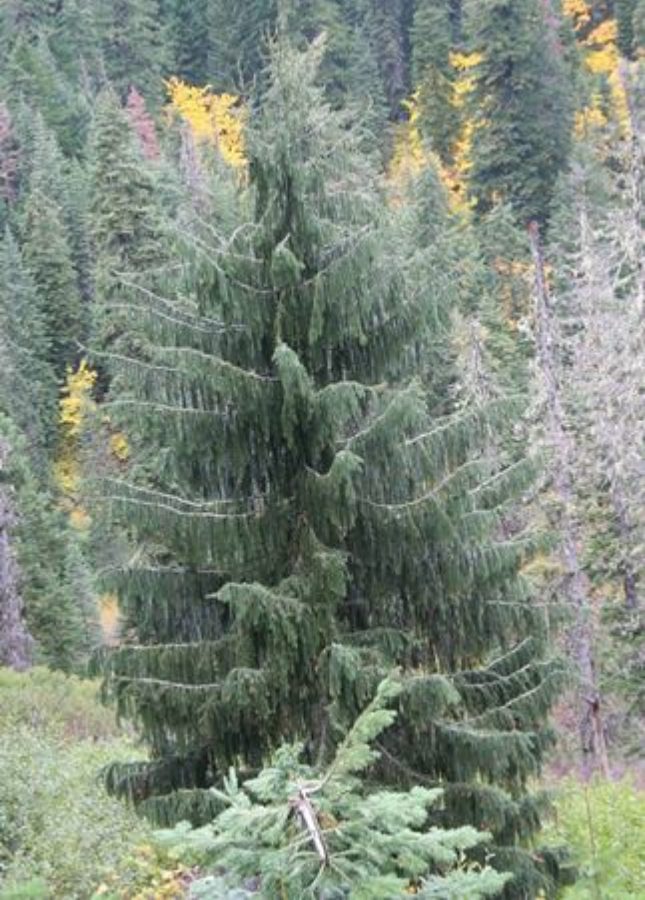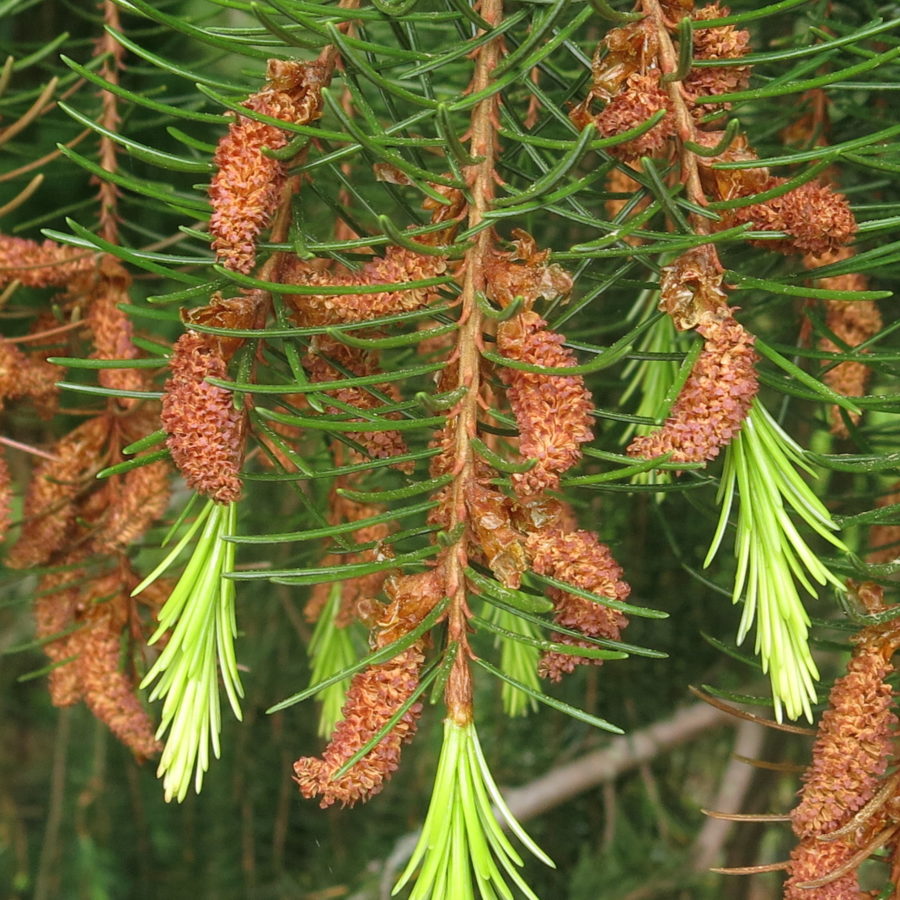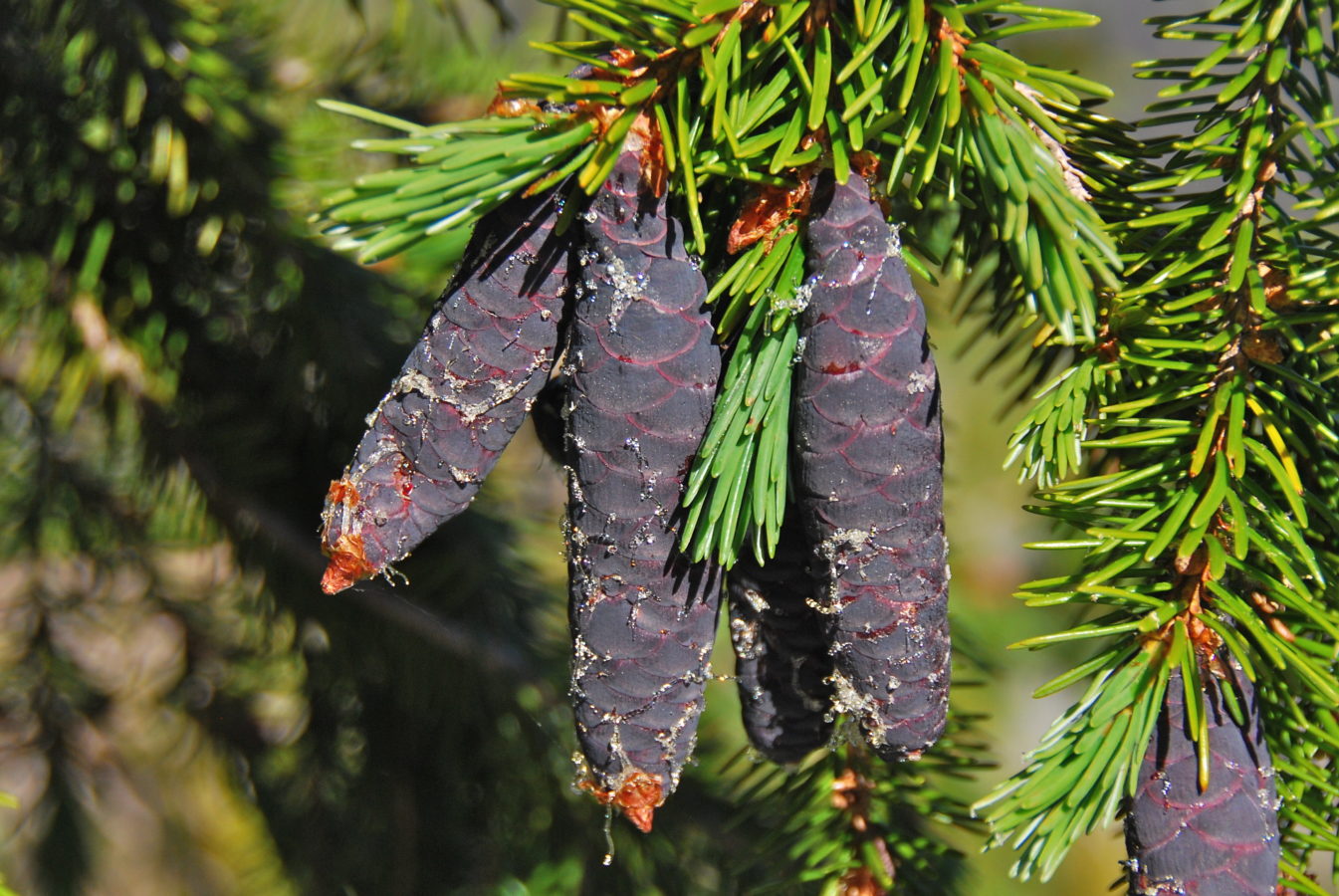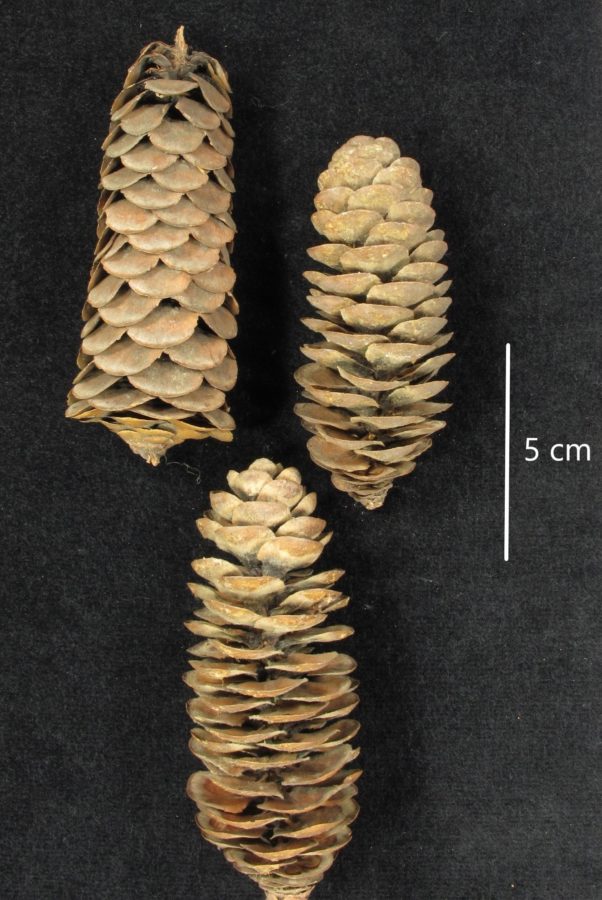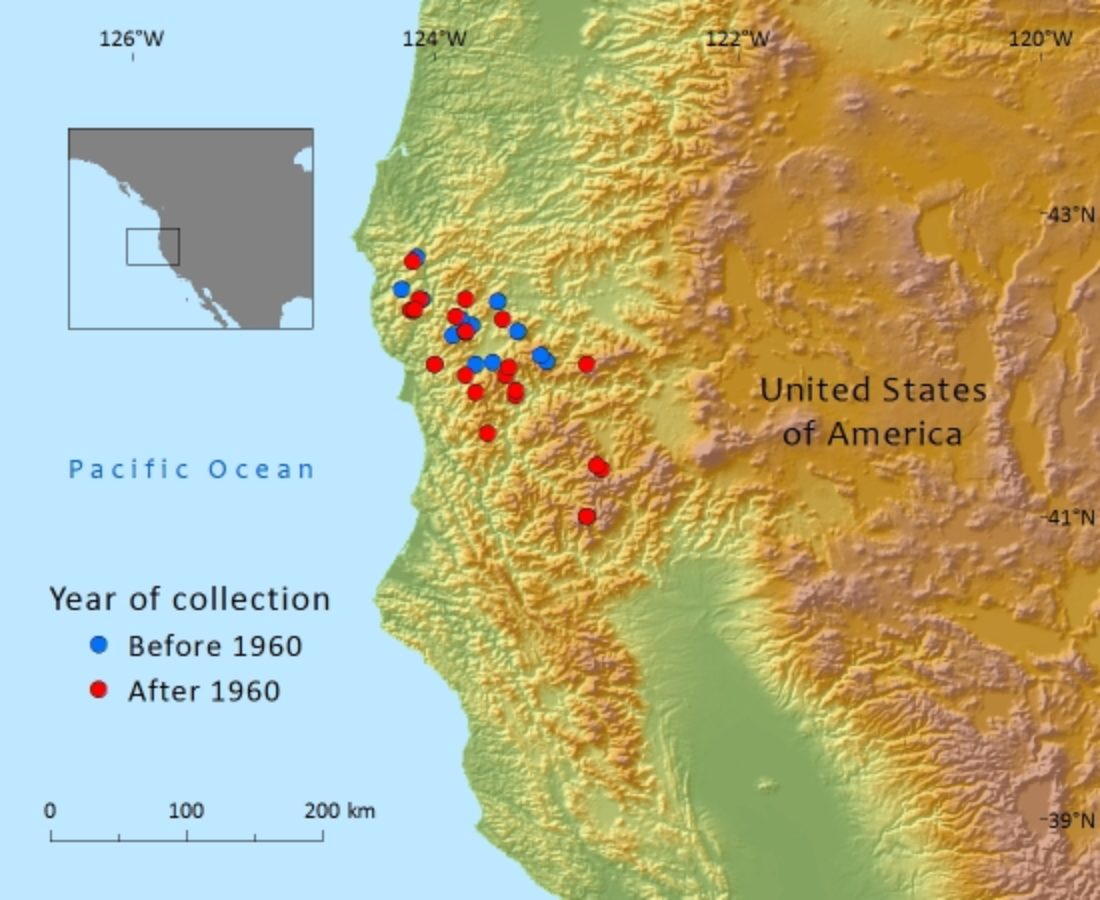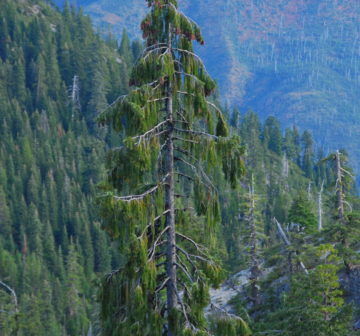Pinaceae
Picea breweriana
Restricted to the Klamath Ranges of northwestern California and southwestern Oregon where the main threat is from fire and climate change.
Human Uses
The wood of Brewer spruce has no special uses. Harvested trees are normally mixed with other species and utilized as low grade lumber. In Europe, it has been a popular ornamental conifer (Thornburgh, 1990)
References and further reading
- Atzet, T. (1979). Description and classification of the forest of the upper Illinois River drainage of southwestern Oregon. Thesis (Ph.D.). Oregon State University.
- Atzet, T. & Wheeler, D. (1982). Historical and ecological perspectives on fire activity in the Klamath Geological Province of the Rogue River and Siskiyou National Forests. U.S. Department of Agriculture, Forest Service, Pacific Northwest Region, Portland, OR.
- Atzet, T. & Wheeler, D.L. 1984. Preliminary plant associations of the Siskiyou Mountain Province. U.S. Department of Agriculture, Forest Service, Pacific Northwest Region, Portland, OR.
- Atzet, T., Wheeler, D., & Riegel, G. (1984). The mountain hemlock and Shasta red fir series of the Siskiyou Region of southwest Oregon. FIR Report 6(1): 4-7.
- Bega, R. (1978). Diseases of Pacific coast conifers (Agriculture Handbook 521). U.S. Department of Agriculture, Washington, DC.
- Cole, D., Millar, C. & N.L. Stephenson. (2010). Responding to Climate Change: A Toolbox of Management Strategies. In. In: Cole, D.N. and Yung, L., eds. (eds), Beyond Naturalness: Rethinking Park and Wilderness Stewardship in an Era of Rapid Change, pp. 179-196. Island Press, Washington, D.C.
- Cope, A. (1992). Picea breweriana. In: Fire Effects Information System, [Online]. Available at: http://www.fs.fed.us/database/... [2010, October 7]..
- Eyre, F. H. (ed.). (1980). Forest cover types of the United States and Canada. pp. 148. Society of American Foresters, Washington, DC.
- Franklin, J.F., Hall, F.C., Dyrness, C.T. & Maser, C. (1972). Federal Research Natural Areas in Oregon and Washington. USDA Forest Service, Pacific Northwest Forest and Range Experiment Station, Portland, OR.
- Furniss, R. L., & V. M. Carolin. (1977). Western forest insects. Miscellaneous Publication 1339. U.S. Department of Agriculture, Washington, DC.
- Griffin, J.R. & W.B. Critchfield. (1972). The distribution of forest trees in California. USDA Forest Service, Research Paper PSW-82 (reprinted with supplement, 1976). Pacific Southwest Forest and Range Experiment Station, Berkeley, CA.
- Hawksworth, F. G., H. H. Bynum & D. V. Hemphill. Dwarf mistletoes on Brewer spruce. Plant Disease Reporter 54(6): 488-489.
- Langer, SK. (1988). Two discoveries in the Siskiyous. Fremontia 16(3): 19-20.
- Ledig, F.T., Hodgkiss, P.D. & Johnson, D.R. (2005). Genic diversity, genetic structure and mating System of Brewer spruce (Pinaceae), a relict of The Arcto-Tertiary forest. American Journal of Botany 92(12): 1975-1986.
- Ledig, T., G. Rehfeldt & B. Jaquish (2012). Projections of suitable habitat under climate change scenarios: implications for trans-boundary assisted colonization. American Journal of Botany 99(7):1217-1230.
- Lewis, C. E. (1975). The graceful weeping tree. American Nurseryman 141(11): 10-11.
- NatureServe. (2010). Picea breweriana. NatureServe Explorer: An online encyclopedia of life [web application]. Version 7.1. Arlington, Virginia Available at: http://www.natureserve.org/explorer. (Accessed: May 24).
- Nelson, J. & Farjon, A. (2013). Picea breweriana. In: IUCN 2013. IUCN Red List of Threatened Species. Version 2013.1. <www.iucnredlist.org>. Downloaded on 13 July 2013.
- Peters, R. L. (1989). Effects of global warming on biological diversity. In: Abrahamson, D.E. (ed.), The Challenge of Global Warming, pp. 82-95. Island Press, Covelo, CA.
- Safford, H. D., J. H. Viers & S. P. Harrison. (2005). Serpentine endemism in the California flora: a database of serpentine affinity. Madrono 52(4): 222-257.
- Sawyer, J. & Thornburgh, D.A. (1969). Ecological reconnaissance of relict conifers in the Klamath region. Unpublished report. Pacific Southwest Forest and Range Experiment Station, Berkeley, CA.
- Sawyer, J.0. & Thornburgh, D.A. (1977). Montane and subalpine vegetation of the Klamath Mountains. In: Barbour, M.G. and Major, J. (eds), Terrestrial vegetation of California, pp. 699-732. John Wiley, New York.
- Thornburgh, D. (1990). Picea breweriana Wats. Brewer spruce. In: Burns, R.M., Honkala, B.H. (technical coordinators) (ed.), Silvics of North America. Volume 1. Conifers. Agric. Handb. 654, pp. 181-186. U.S. Department of Agriculture, Forest Service, Washington DC.
- Thornburgh, D.A. and White, R.C. (1979). Vegetation-habitat types of montane forests in the Siskiyou Mountains. Humboldt State University, Forestry Department, Arcata, CA.
- Thornburgh, D.A. and Zinman, H. (1978). Stand structural analysis of Brewer spruce populations. Unpublished report. Humboldt State University, Forestry Department, Arcata, CA.
- Waring, R. H. (1969). Forest plants of the eastern Siskiyous: their environmental and vegetational distribution. Northwest Science 43(1): 1-17.
- Waring, R. H., W. H. Emmingham and S. W. Running. (1975). Environmental limits of an endemic spruce, Picea breweriana. Canadian Journal of Botany 53(15): 1599-1613.
